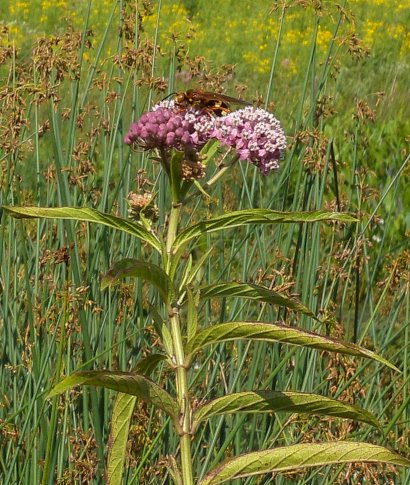Guest Blogger: Jay Garcia, class of 2012!
No, it’s not Spanish you’re reading. It’s the scientific name for the Red Milkweed. Wonder why it’s called the Red Milkweed? Well, let’s see. It looks red (no brainer) and it’s part of the milkweed family. Hence, Red Milkweed! Yeah, scientists aren’t that creative when naming such an awesome plant like this!
The Red Milkweed is naturally found in low lying areas, like swamps and ponds. But, we found this plant here in our butterfly garden! Score one for the Maine East!
These plants would like damp soils in full sun to partial shade, which can best describe the Butterfly Garden! One fun fact: The Red Milkweed can be found along ditches. Now that’s cool. This plant produces rich colors from deep rose to deep purple. So, not really red…ish. But, beautiful right?
This plant is also great food for the Monarch larvae to come! They can just eat the leaves and as time goes on, the larvae turn into beautiful Monarch Butterflies! These butterflies love Milkweed.
Ever wonder how they get made? Well, since this is a blog post, I assume we all know about the birds and the bees. But, the mommy lays her eggs on Milkweed plants, then after about 4 days, the eggs hatch and turn into caterpillars, they eat the leaves off for food before they go into the pupa stage. After the pupa stage, Bibbidi-Bobbidi-Boo! The caterpillar turns into a beautiful Cinderell…erm, Monarch Butterfly.
The bad news? The plant is poisonous if it’s ingested. So, I guess we can’t eat it…but the Monarch Butterfly can! Maybe that’s why they’re also poisonous. Perhaps, the butterfly possesses a unique ability that can have them eat the milkweed without dying off. As a result, all that ingestion made the butterfly poison. Maybe I’ll ask Childress. (“IT’S RIHA!”)

No comments:
Post a Comment